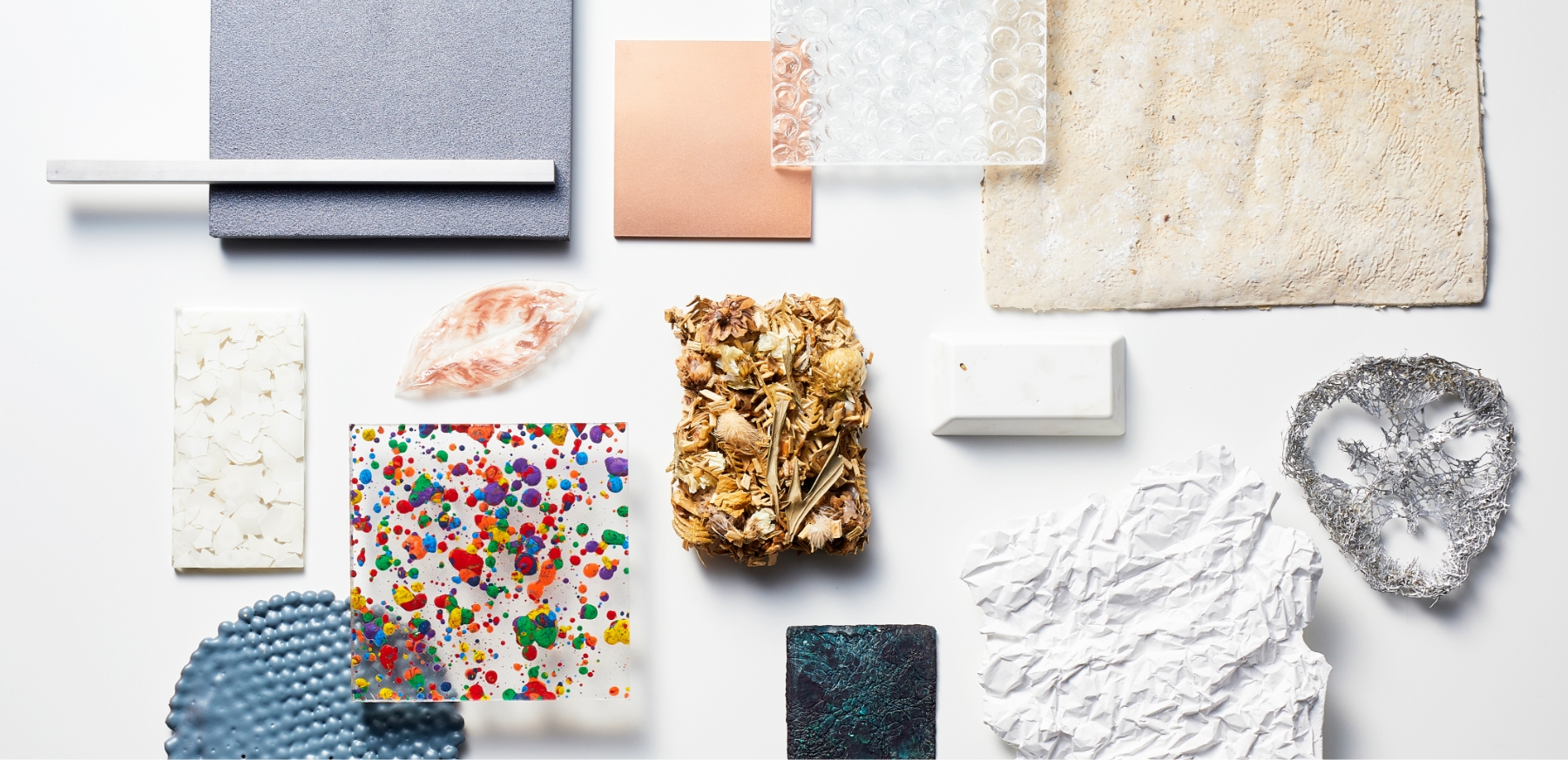Discovering CMF Design through Industry-Academia Collaboration
Nissha Design & CMF Group has been conducting industry-academia collaboration with design and art universities. We provided a lecture to students on the CMF design process that NISSHA has developed uniquely.
In this article, we will introduce a curriculum that was implemented during the second semester classes for 2nd and 3rd year students. The curriculum spans approximately one and a half months and was charged by Mr. Kazama, the head of the Product Design Department at Kyoto University of the Arts.
*CMF: A term for Color, Material, and Finish.

Enhancing Material Understanding Through Design Trend Analysis Methodology
When we were first approached with the idea of industry-academia collaboration, we had concerns about how much interest students studying product design would have in CMF design. We wondered if they might be more interested in learning about specific aspects related to form and functionality.
However, Professor Kazama told us, “Creating the world view of product design is all about CMF. That is why we asked Nissha to pass on its know-how as a CMF design specialist offering design proposals on a global scale,”and the industry-academia collaboration project was realized.
During the latter half of the semester, we proposed a program based on four themes from the “Nissha Trend Vision,” which summarizes the latest design trend analysis we create every year.
Students were tasked to build their own worldview using these themes as the axis. After that, they were encouraged to search for materials themselves and engage in the process of processing and designing from the perspective of CMF design.
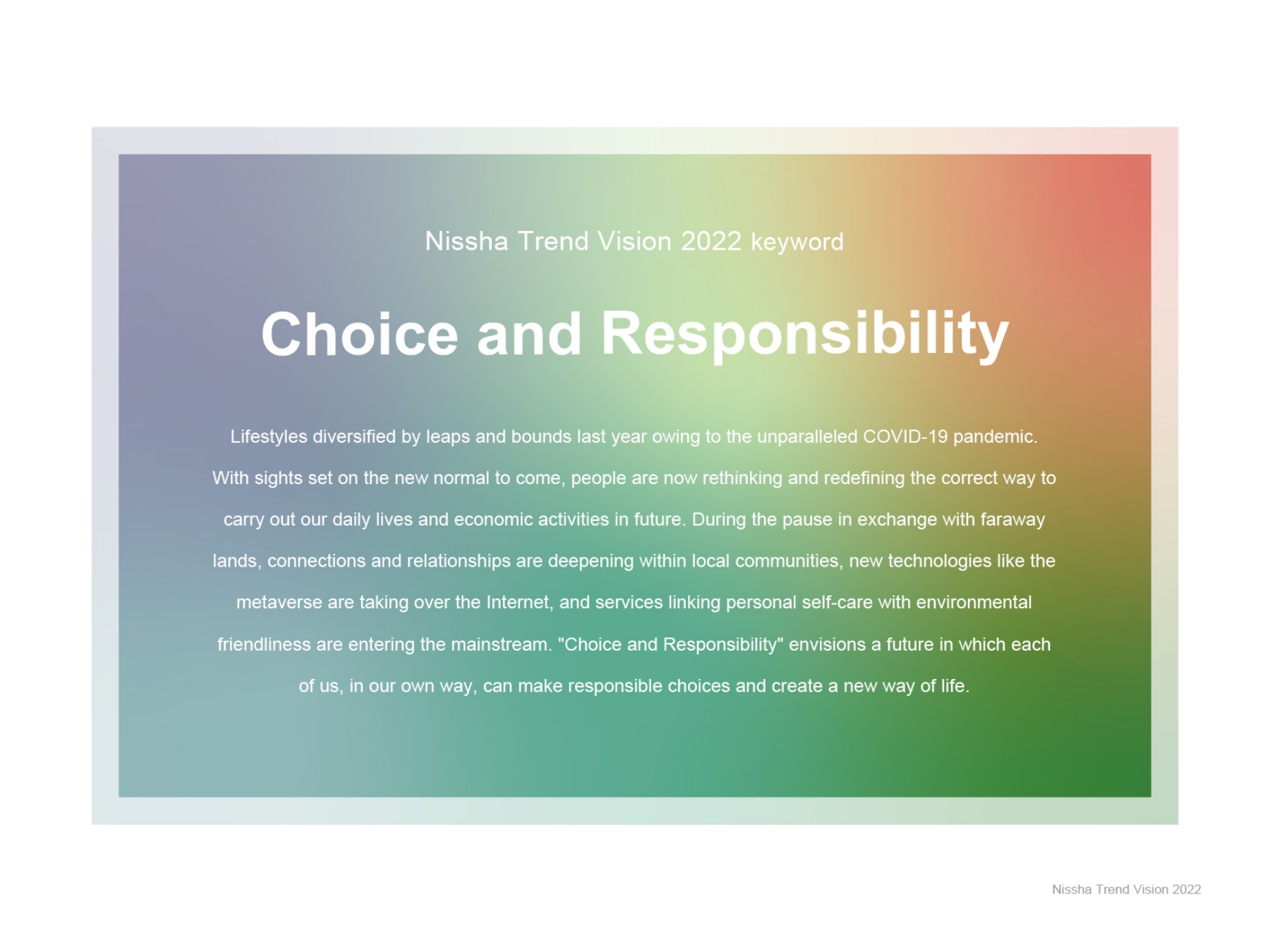
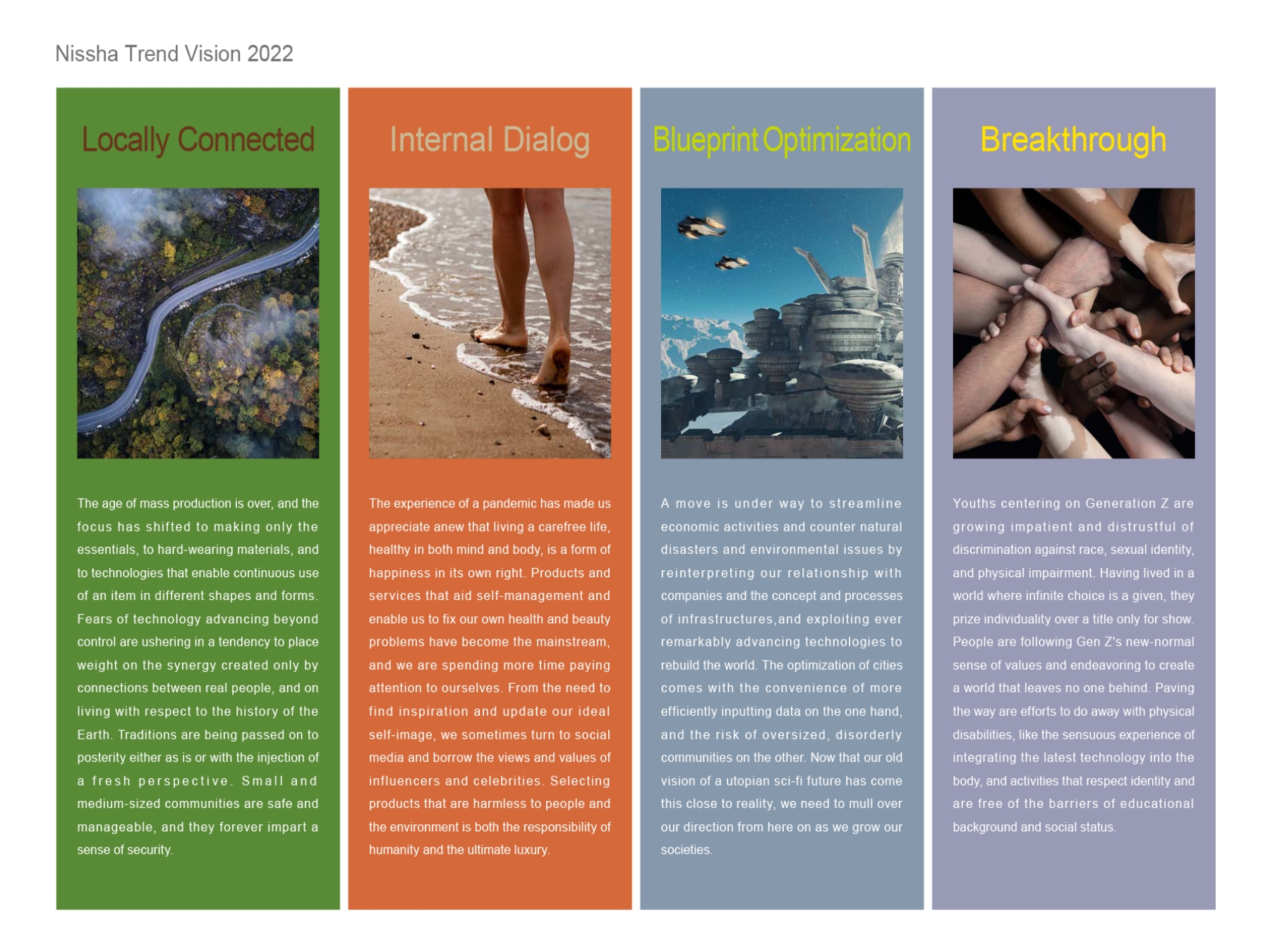
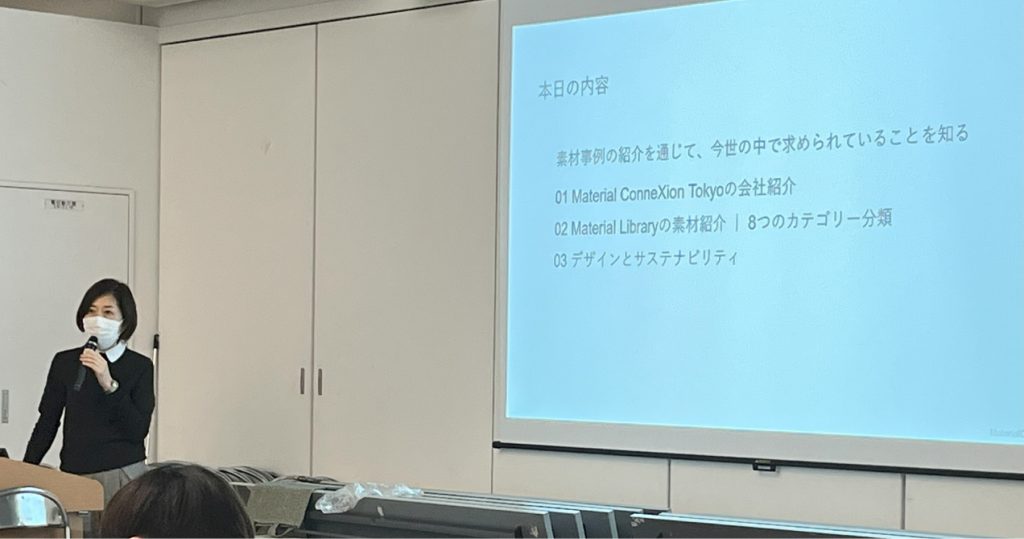
CMF design specialists, a group company of Nissha, M crossing Co., Ltd. Representative Ms. Yoshikawa gave a lecture on “The Potential of Materials in Solving Social Issues,” providing an opportunity for students to recognize the significance of materials.
M Crossing operates “Material ConneXion Tokyo,” a library of advanced materials collected from around the world. They provides consulting services as a specialist in material proposals.
Design Process in Phases with Consideration for Persona Image
The curriculum consisted of four major phases, with a total of eight groups of four members in each group for group work. In product design, it is important to proceed with the end user in mind. For this reason, we asked them to always imagine the persona image of the user.
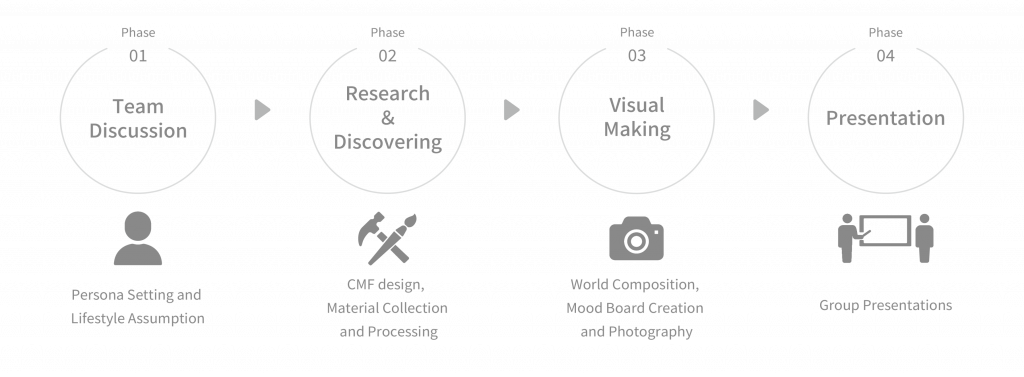
Phase 01: Team Discussion
Choose one theme from Trend Vision and discuss the lifestyle of the persona associated with it. Extract the elements of the trend and describe them in the concept sheet.
Phase 02: Research & Discovering
Extract CMF from the persona image and product concept mentioned in the concept sheet, gather materials, and then process them according to the theme.
Phase 03: Visual Making
Arrange the each group created material works as subjects to construct a material mood board that represents the theme’s atmosphere. Take photographs of the mood board.
Phase 04: Presentation
Each group gives a presentation of their worldview and the intent of their work by arranging the photographed mood board and material works side by side.
Phase 01, all the groups seemed to be struggling to understand the theme and to create their personas lifestyles. In the world, people from various backgrounds lives different lifestyles, including those abroad, making it challenging to envision such diverse ways of life.
Moving on to Phase 02, they were actively engaged in searching and processing materials for their creative works. It seemed that the group that had a clear image of the materials on their concept sheets were able to search for materials more smoothly and spend enough time on processing. However, since this was the first time for everyone to experience this curriculum, many groups did not have enough time to work with Phase 02. In the participant questionnaire, we received comments such as “I wanted to spend more time on the processing work” and “I wanted to focus more on the quality.”

Lecture Scene / Nissha F8, Inc., – Mr. Arita, a photographer (Left) ・Ms. Jinnai, the director (Right)
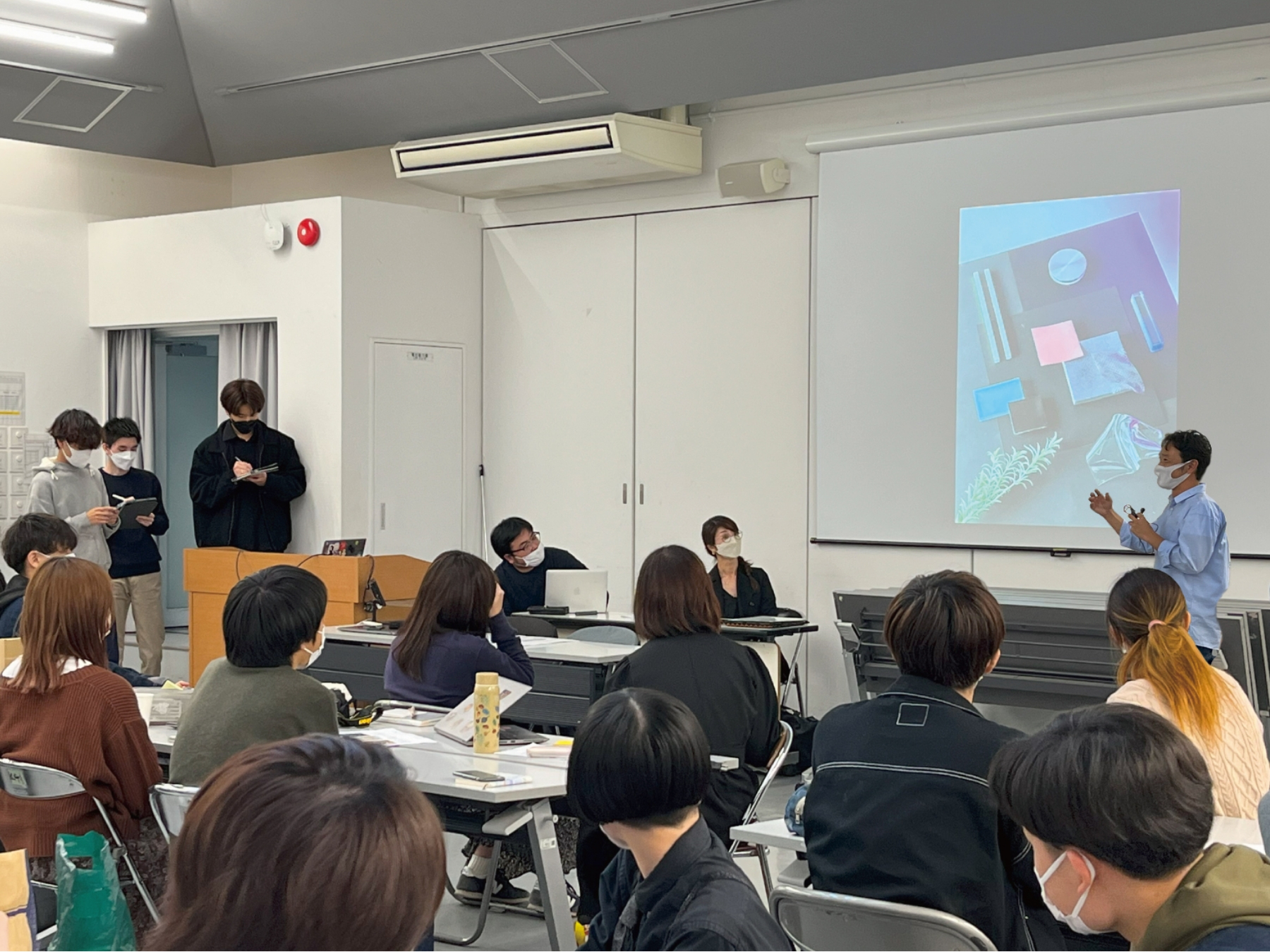
An explanation from a professional’s point of view on how to capture photographs that express a unique worldview.
Mastering the Art of Photographing Design Aesthetics
In Phase 03, we conducted a lecture by a professional photographer on the shooting techniques to visualize the world view. Mr. Arita, a photographer from Nissha F8, Inc., and Ms. Jinnai, the director of the same company, provided clear explanations on “how to express the world view through the camera.”
Nissha F8 is a group company that provides photography, video, and other general photography services, producing visuals that convey the full appeal of our customers’ products.
In the final presentation of Phase 04, We believe all students presented their own unique material works within the world view of each theme, without duplicating the work of others. Throughout this curriculum, we have witnessed material selection and processing that surpassed our expectations, resulting in the creation of “CMF that feels familiar yet entirely new” and “CMF that surprises us with their material and processing methods.” These discoveries have been truly inspiring for us.
Mood Boards and Material Works
We would like to introduce some of the mood boards that strongly convey the world view and some of impressive material works. The photos of the works were retaken at Nissha F8 after the curriculum.
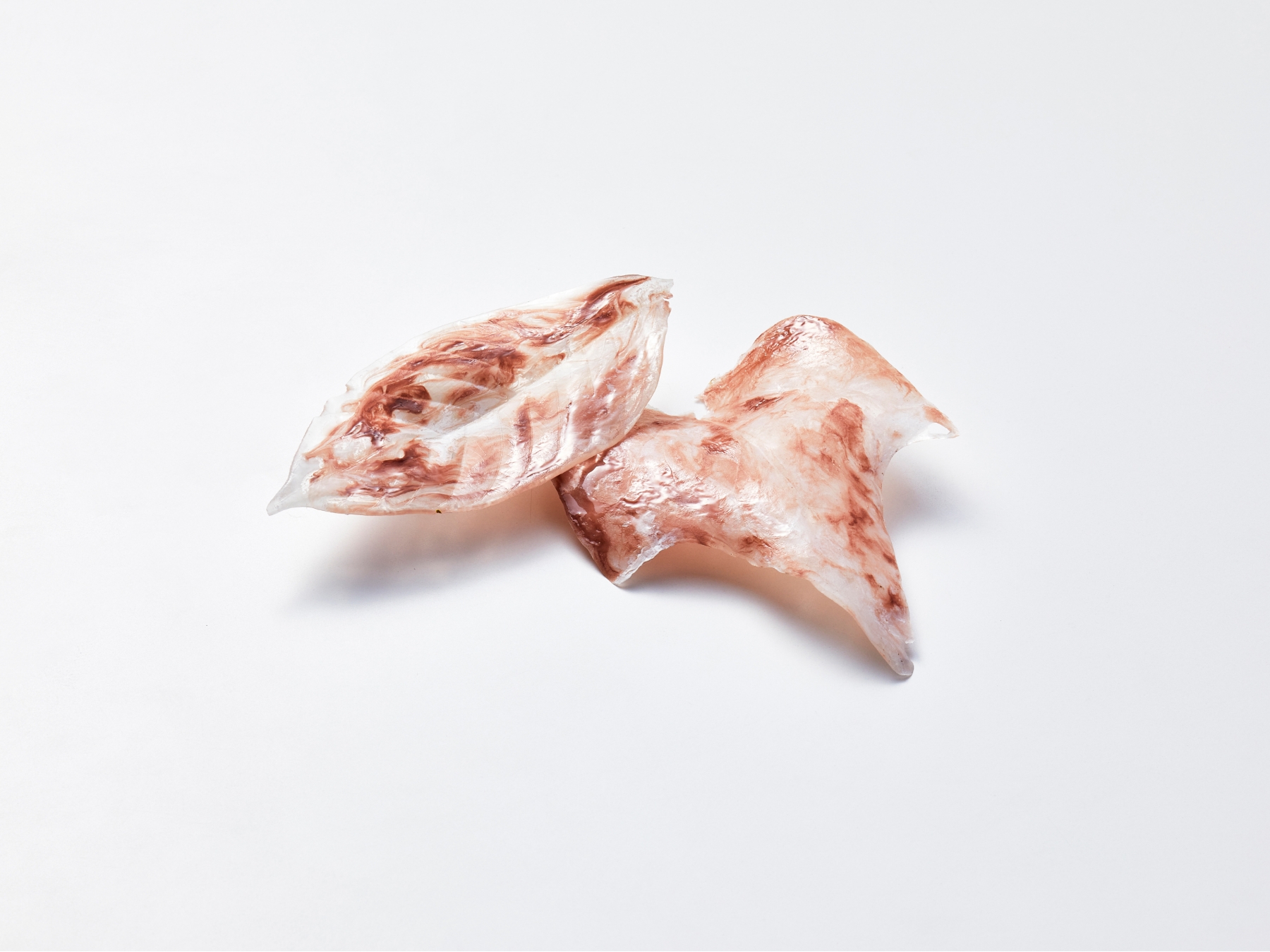
UV resin, plant leaves / Chisa TSUCHIKURA ©Nissha F8, Inc.,
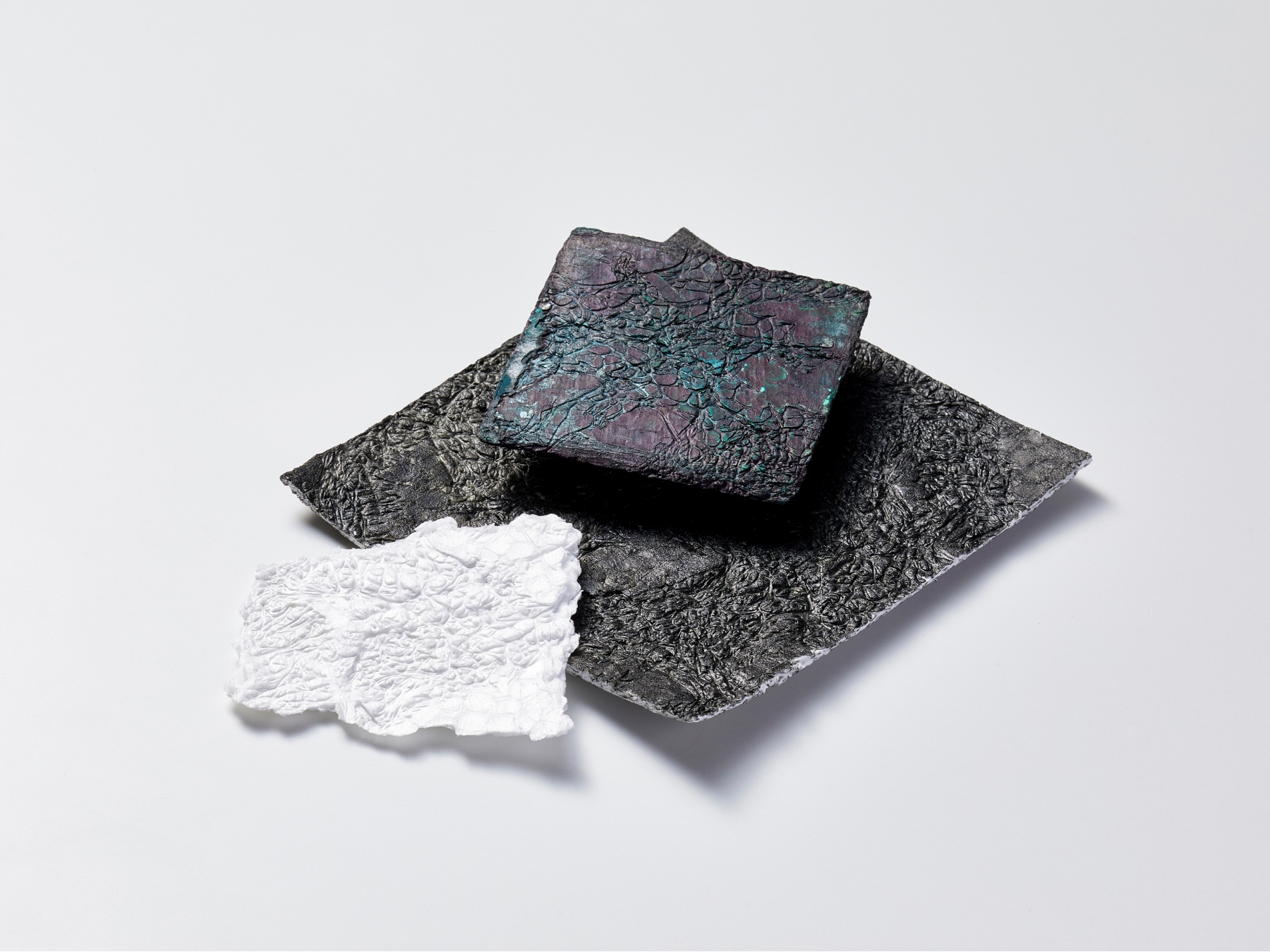
Ink, styrofoam / Ryo FUKUDA ©Nissha F8, Inc.,

Crayons, two-part epoxy resin / Shogo YASUMATSU ©Nissha F8, Inc.,

Plaster, fabric, aluminum foil / Marin SATOMOTO ©Nissha F8, Inc.,

Dried flowers, apple chips, pinecones / Misora TAKI ©Nissha F8, Inc.,
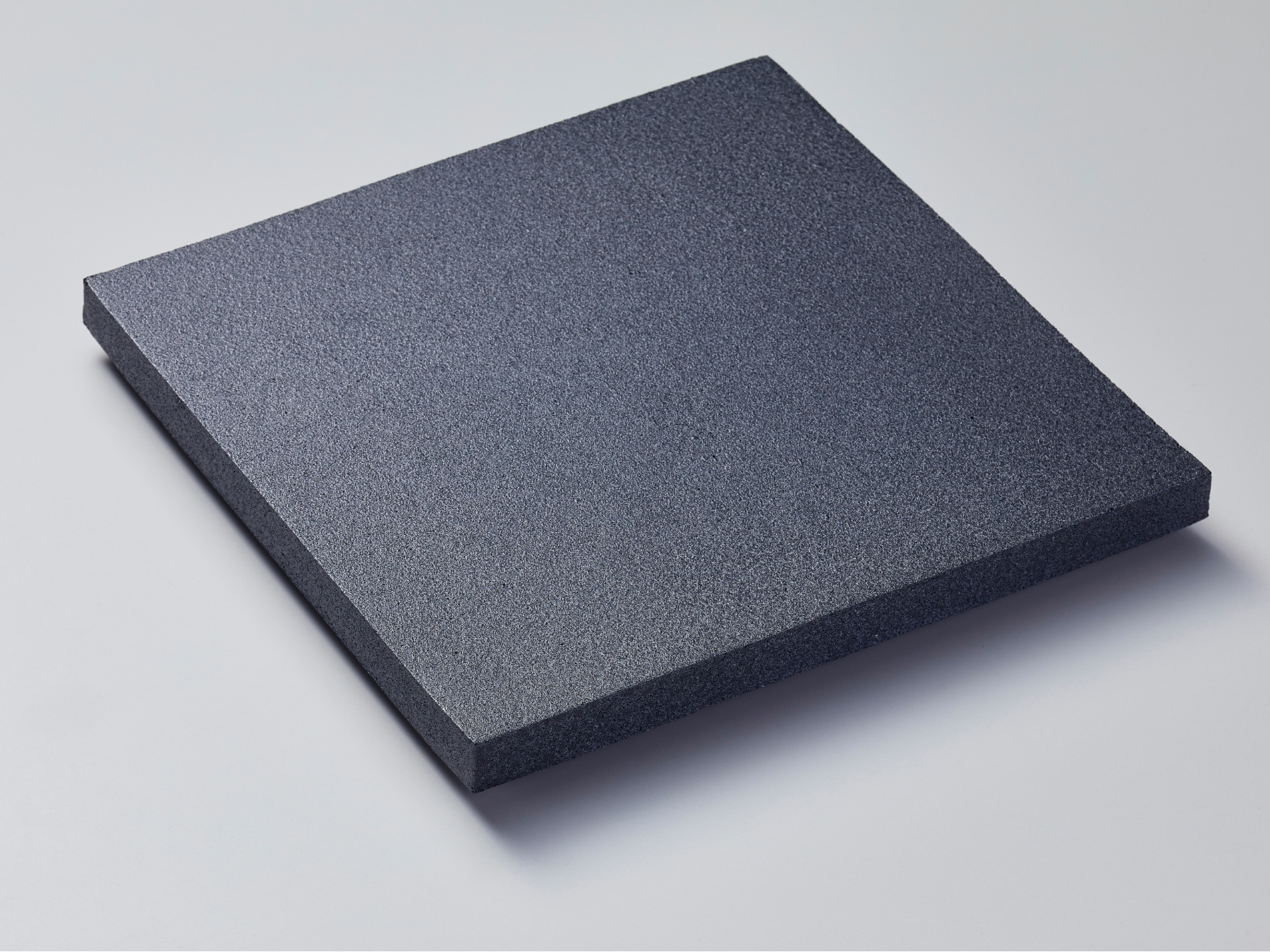
Natural rubber / Haruhi KUBOTA ©Nissha F8, Inc.,
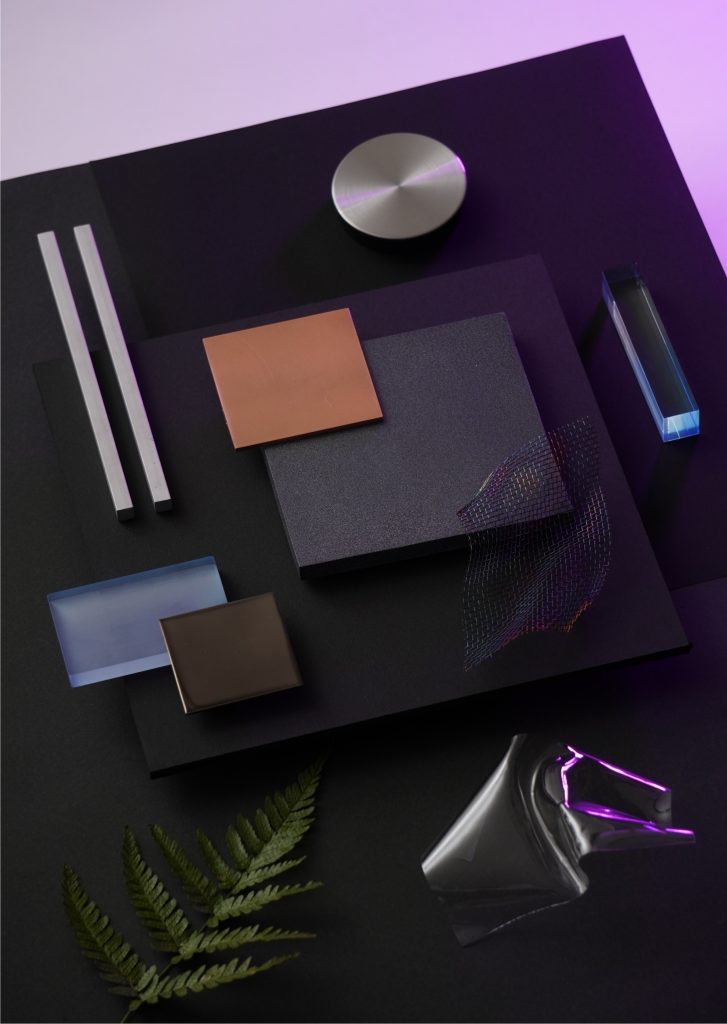

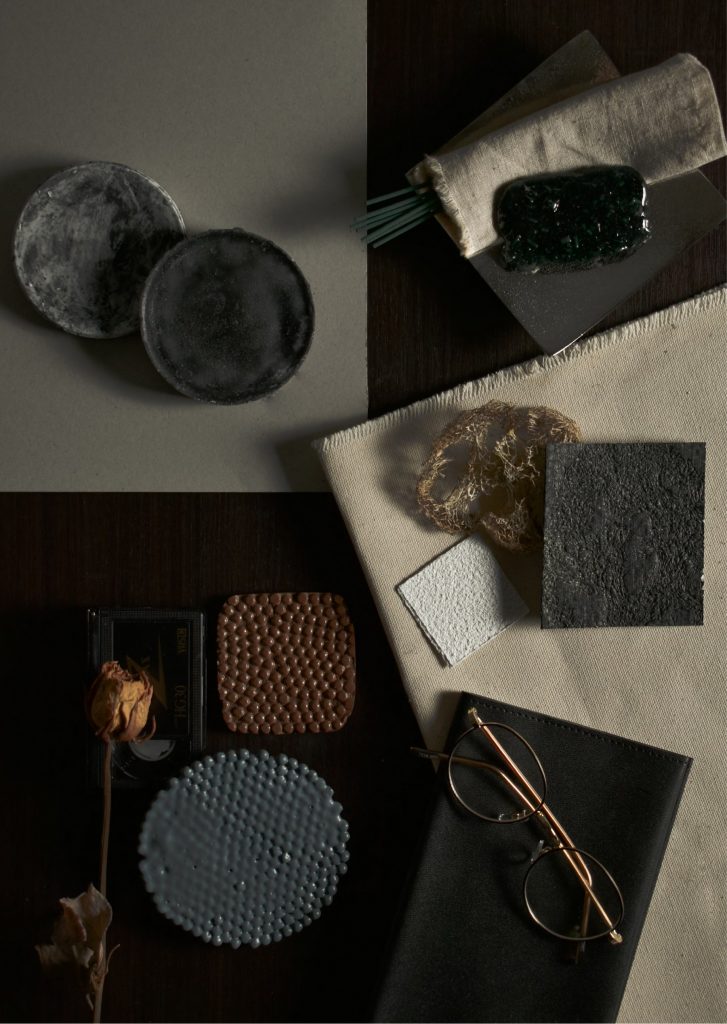
If you are interested in Nissha Design & CMF Group’s industry-academia collaboration case studies, trend analysis process, or business partnerships, please feel free to contact us.


